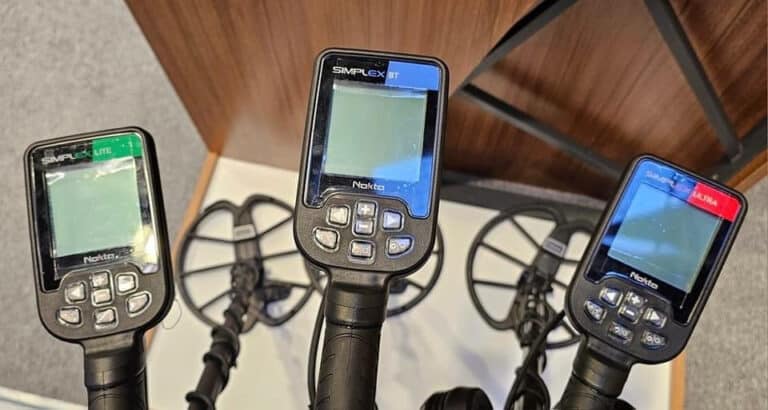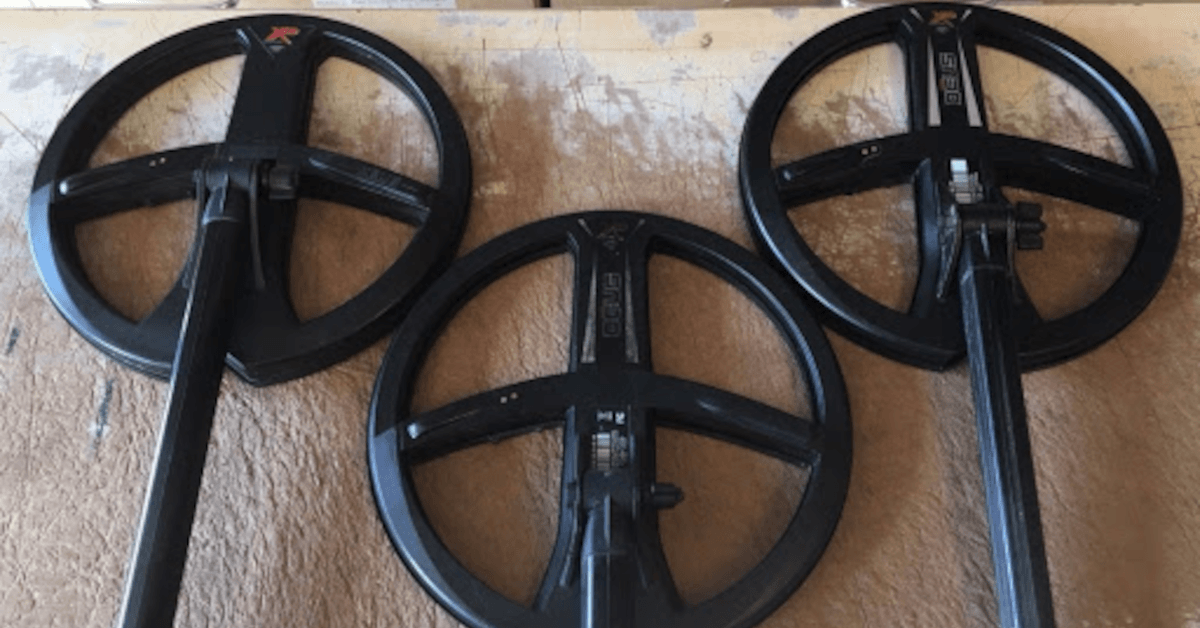In this blog, I look at multi-frequency metal detectors compare them to single-frequency detectors and offer my humble opinion of why the hype over multi-frequency metal detectors is overrated. For now.
A multi-frequency metal detector typically outputs 3 – 5 different frequencies simultaneously. In simple terms, the advantage means a target that is missed by a certain frequency might be picked up by the other remaining frequencies, thus increasing your chances of a find. However, when the detector sends multiple simultaneous frequencies, it requires a lot of processing, which comes at a performance cost, negatively impacting depth and reactivity.
Multi-frequency metal detectors are very good for beach detecting and use in saltwater. They tend to be more stable when compared to most single-frequency detectors.
A good example of a multi-frequency metal detector is the popular Minelab Equinox 800, featuring a range of 5 frequencies: 5kHz, 10kHz, 15kHz, 20kHz and 40kHz, which it is capable of outputting simultaneously.
Metal detectors like the XP DEUS and XP ORX offer a staggering 21 frequencies, albeit they are not simultaneous. The frequency range starts at a very low 13kHz to a very high 81kHz and everything in between. A wide range of frequencies such as that of the XP DEUS and XP ORX means the detector can be used for hobby detecting where lower frequencies are best, while it can also be used for gold prospecting, which requires a very high frequency. It can therefore be said that a metal detector offering a wider range of frequencies is more versatile. Emitting a single frequency will also have a performance gain over a multi-frequency as the detector only has to process a single frequency, resulting in better depth, faster reactivity and similar performance gains.
Having a wider range of frequencies to choose from in the XP DEUS and XP ORX, two machines that are popular amongst experienced and professional detectorists, is that these experienced detectorists know exactly what they are in search of. Therefore, they will select a single frequency between 13kHz – 81kHz, which they know is best suited for the particular target they are in search of. Fine-tuning the detector to the best frequency results in better quality finds.
As you can see, there are benefits to having a multi-frequency detector, while there are equally great benefits to having a single-frequency detector. So don’t be fooled by all the multi-frequency hype; it is not the end-all and be-all. Well, at this point in time, at least, I will explain why.
It has been said that the reason why there are so few affordable multi-frequency detectors on the market is due to a certain manufacturer has had a patent on simultaneous multi-frequency technology. As a result, the other metal detector manufacturers could not bring any multi-frequency detectors to market during that time. This stifled competition and slowed simultaneous multi-frequency development and innovation. According to those in the know, these patents expired in and around 2020; hence we are only now starting to see other metal detector manufacturers bring out multi-frequency detectors. Such examples are Garret with their APEX and Nokta Makro, who will soon be announcing their new multi-frequency metal detector.
Now that the patent has expired, we can expect to see a rapid technology shift and advancements in multi-frequency metal detecting technologies. Finally, there will be competition in the market which is excellent news for the consumer. Expect to see soon a wider range of simultaneous multi-frequency metal detectors to choose from and better pricing.
As touched on, the exciting news for 2021 is that Nokta Makro has made it known that they will be bringing out a new simultaneous multi-frequency metal detector toward the middle of 2021. If the Nokta Makro Simplex+ is anything to go by, then detectorists are in for a real treat. We speculate that the new Nokta Makro multi-frequency detector will be a notch above existing multi-frequency detectors and at a far better price.
If we could fast forward two or three years, I expect my opinion that multi-frequency metal detectors are not the end-all and be-all will no longer hold. With the patent no longer hindering manufacturers, I believe simultaneous multi-frequency technology will rapidly evolve and mature in the next few years, thanks to the competition where the other manufacturers are now investing in research and development in this technology.
Nokta Makro Officially released the Nokta Makro The Legend Simultaneous Multi-Frequency Metal Detector, which is set to once again turn the metal detecting industry on its head.
Opinion Piece by John Guthrie








